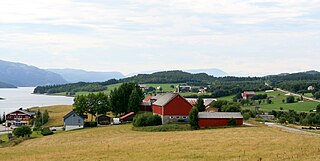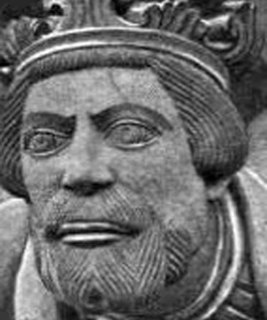This article needs additional citations for verification .(February 2018) (Learn how and when to remove this template message) |

The Bagli Party or Bagler (Old Norse: Baglarr, Norwegian Bokmål: Bagler, Norwegian Nynorsk: Baglar) was a faction or party during the Norwegian Civil Wars. The Bagler faction was made up principally of the Norwegian aristocracy, clergy and merchants. [1]

The civil war era in Norway began in 1130 and ended in 1240. During this time in Norwegian history, some two dozen rival kings and pretenders waged wars to claim the throne.
Contents
It was formed in Skåne, then part of Denmark, in 1196 principally by Bishop Nicholas Arnesson of Oslo and Archbishop Erik Ivarsson (ca. 1130–1213) of Nidaros around the pretender Inge Magnusson (nicknamed the Baglar-King) to depose King Sverre Sigurdsson. It contested with the Birkebeiners, essentially a faction of peasants, led by the pretender King Sverre, for control in a Norwegian civil war during the late 12th century. Sverris saga provided Sverre a royal lineage as putative bastard son of the late king Sigurd II of Norway, which in the Norway of the time provided him a claim to the throne. Historians generally agree with the consensus of his time that he was a pretender/ impostor.

Denmark, officially the Kingdom of Denmark, is a Nordic country and the southernmost of the Scandinavian nations. Denmark lies southwest of Sweden and south of Norway, and is bordered to the south by Germany. The Kingdom of Denmark also comprises two autonomous constituent countries in the North Atlantic Ocean: the Faroe Islands and Greenland. Denmark proper consists of a peninsula, Jutland, and an archipelago of 443 named islands, with the largest being Zealand, Funen and the North Jutlandic Island. The islands are characterised by flat, arable land and sandy coasts, low elevation and a temperate climate. Denmark has a total area of 42,924 km2 (16,573 sq mi), land area of 42,394 km2 (16,368 sq mi), and the total area including Greenland and the Faroe Islands is 2,210,579 km2 (853,509 sq mi), and a population of 5.8 million.
Nicholas Arnesson was a Norwegian bishop and nobleman during the Norwegian civil war era. He was a leader in the opposition against King Sverre of Norway and founder of the Bagler party. He is a chief antagonist in Sverris saga. and also appeared in Kongs-Emnerne, an historic drama written by Henrik Ibsen in 1863.

Oslo is the capital and most populous city of Norway. It constitutes both a county and a municipality. Founded in the year 1040 as Ánslo, and established as a kaupstad or trading place in 1048 by Harald Hardrada, the city was elevated to a bishopric in 1070 and a capital under Haakon V of Norway around 1300. Personal unions with Denmark from 1397 to 1523 and again from 1536 to 1814 reduced its influence, and with Sweden from 1814 to 1905 it functioned as a co-official capital. After being destroyed by a fire in 1624, during the reign of King Christian IV, a new city was built closer to Akershus Fortress and named Christiania in the king's honour. It was established as a municipality (formannskapsdistrikt) on 1 January 1838. The city's name was spelled Kristiania between 1877 and 1897 by state and municipal authorities. In 1925 the city was renamed Oslo.
The civil wars period of Norwegian history lasted from 1130 to 1217. During this period there were several interlocked conflicts of varying scale and intensity. The background for these conflicts were the unclear Norwegian succession laws, social conditions and the struggle between church and king. There were then two main parties, firstly known by varying names or no names at all, but finally condensed into parties of Bagler and Birkebeiner. The rallying point regularly was a royal son, who was set up as the head figure of the party in question, to oppose the rule of the king from the contesting party.

The history of Norway has been influenced to an extraordinary degree by the terrain and the climate of the region. About 10,000 BC, following the retreat of the great inland ice sheets, the earliest inhabitants migrated north into the territory which is now Norway. They traveled steadily northwards along the coastal areas, warmed by the Gulf Stream, where life was more bearable. In order to survive they fished and hunted reindeer. Between 5,000 BC and 4,000 BC the earliest agricultural settlements appeared around the Oslofjord. Gradually, between 1500 BC and 500 BC, these agricultural settlements spread into the southern areas of Norway - whilst the inhabitants of the northern regions continued to hunt and fish.
An order of succession or right of succession is the sequence of those entitled to hold a high office such as head of state or an honor such as a title of nobility in the order in which they stand in line to it when it becomes vacated. This sequence may be regulated through descent or by statute.
From a socio-historical perspective, Bagler can be interpreted as conservatives against the results of developments such as the rapid increase in landless border men (markamenn), who settled along the Swedish border and made their living by pillaging the rich old settlements. That lawless population became the foremost basis of the Birkebeiner. Bagler also favoured the church and its privileges and possessions.
Viken and Vestlandet, where social distinctions were growing deeper, were gaining more power at the expense of Trøndelag, a region where the social tensions were not as marked. The wealthier classes, particularly in Viken, were the basis of the Bagler party. The powerful old Trønder families were simply being left behind by their peers in the south, who had acquired a strong leader in the Vestland earl Erling Skakke in the mid-12th century. The antecedents of the Bagli party had been supporting the rule of King Inge I of Norway and after him, King Magnus V of Norway (killed 1184) and the latter's father and regent, earl Erling Skakke (killed 1179).

Viken or Vika, was the historical name for a district in southeastern Norway, including the modern day Swedish province Bohuslän, which consisted of the area surrounding the Oslofjord and Skagerrak, the strait running between Norway and the southwest coast of Sweden and the Jutland peninsula of Denmark.

Trøndelag is a county in the central part of Norway. It was created in 1687, then named Trondhjem County ; in 1804 the county was split into Nord-Trøndelag and Sør-Trøndelag, and the counties were reunited in 2018. Trøndelag county and the neighboring Møre og Romsdal county together form what is known as Central Norway.
Erling Skakke was a Norwegian Jarl during the 12th century. He was the father of Magnus V, who reigned as King of Norway from 1161 to 1184.
The Birkebein faction had been formed in 1174 to depose Magnus and Erling. The Birkebeiner continued earl Erling's centralization which underscores the geographical motivations behind the conflicting parties. The Birkebein policy during Sverre did not seek a social revolution, only to move the centre of power back to Trøndelag. [2]
Around the year 1200, these rival groups shared the identical but opposite goal of controlling the entire country. King Sverre managed to acquire control of much of Norway, but in Hedmark and Østerdal, the Baglers remained powerful. Upon Sverre's death in 1202, the Bagler power increased. Sverre's successor, King Haakon III of Norway, died after a two-year reign in 1204, leaving his posthumous son Haakon Haakonsson in Hamar, which was under Bagler control. In 1206, a group of the Birkebeiners set off on a dangerous voyage through treacherous mountains and forests, taking the now two-year-old Haakon Haakonsson to safety in Trondheim. Norwegian history credits the Birkebeiners' bravery with preserving the life of the boy who later became King Haakon IV of Norway.

Norway, officially the Kingdom of Norway, is a Nordic country in Northwestern Europe whose territory comprises the western and northernmost portion of the Scandinavian Peninsula; the remote island of Jan Mayen and the archipelago of Svalbard are also part of the Kingdom of Norway. The Antarctic Peter I Island and the sub-Antarctic Bouvet Island are dependent territories and thus not considered part of the kingdom. Norway also lays claim to a section of Antarctica known as Queen Maud Land.

Hedmark[²heːdmɑrk](
Haakon Sverresson was King of Norway from 1202 to 1204.
The Birkebeins managed to hold some power, despite short reigns of their monarchs after Sverre. In 1209, a pact was made between Bagler and Birkebeiner, which recognized Bagler pretender Philip Simonsson as ruler of Oppland and Viken in Eastern Norway, without the title of king, and recognized Birkebeiner's Inge Bårdsson as King Inge II of Norway. They both died in 1217 and Birkebeiner-born Haakon IV ascended the throne, relatively unopposed, under the regency of Duke Skule Baardsson. Later in 1240, Haakon IV ended the civil wars and weakened the role of the aristocracy in Norway.




